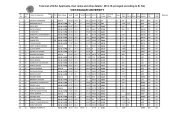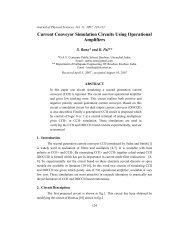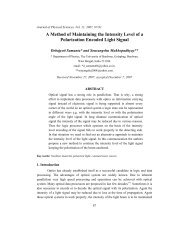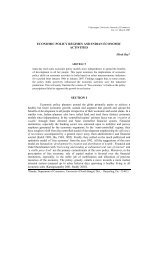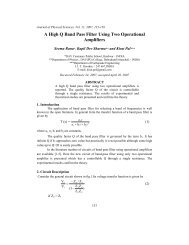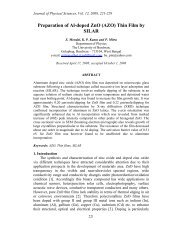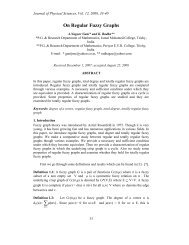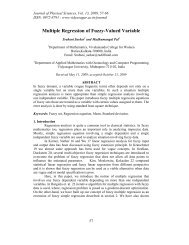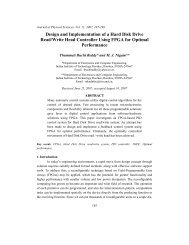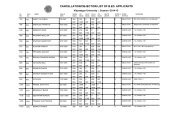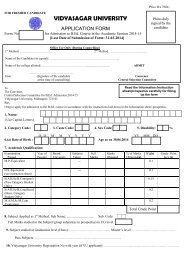VIDYASAGAR UNIVERSITY JOURNAL OF COMMERCE
VIDYASAGAR UNIVERSITY JOURNAL OF COMMERCE
VIDYASAGAR UNIVERSITY JOURNAL OF COMMERCE
Create successful ePaper yourself
Turn your PDF publications into a flip-book with our unique Google optimized e-Paper software.
WTO AND INDIA: TIME FOR RENAISSANCE <strong>OF</strong> THE FARM SECTOR<br />
1995 80.3 63.0 167.0 13.8 180.8<br />
1996 74.6 64.3 161.5 12.0 173.5<br />
1997 78.1 65.4 170.1 13.5 183.6<br />
1998 73.1 55.3 151.2 12.0 163.2<br />
1999 74.2 59.2 156.7 13.3 170.0<br />
2000 74.3 58.4 154.3 11.6 165.9<br />
2001 69.5 49.6 141.0 10.9 151.9<br />
2002 83.5 60.8 167.4 12.9 180.4<br />
2003 66.2 65.8 149.1 10.6 159.7<br />
2004 71.3 59.2 155.8 13.1 168.9<br />
2005(P) 64.7 56.3 142.7 11.5 154.2<br />
Source: Department of Agriculture and Cooperation, Ministry of Agriculture, Govt. of India.<br />
Time for Renaissance of the Farm Sector<br />
The farm sector occupies a very vital position in our economy. It is a contributor to the<br />
overall economic growth. On the one hand it supplies food, raw material and exportable<br />
goods and on the other hand, most important is, it provides a fairly large market for nonfarm<br />
goods and services. Its significance can hardly be exaggerated. The significance of the<br />
farm sector is much wider than a mere supplier of food grains. Dependence of a very large<br />
proportion of population further adds to its significance. Its share in the GDP though is<br />
declining, but it still commands approximately 20 % share of the GDP. The farm sector is<br />
also known as a source of earner of foreign exchange by exporting its products. In essence, it<br />
can be said that, farming is detrimental for the inclusive economic growth of the country.<br />
The farm sector’s growth is a detrimental factor for the inclusive growth of the economy as<br />
it employs a significantly larger economically active population. This proportion of<br />
population can create a thrust for the economic growth by creating a substantial demand for<br />
goods and services which can put the economy on the path of a demand-led growth. WTO is<br />
changing the international trade environment and farm sector can also take the advantages of<br />
the same by way of exporting its products to WTO’s member nations. Once the farm sector<br />
is revived for growth of farm exports, it can have a multiplier effect for the growth of<br />
economy.<br />
The farm sector is the backbone of Indian economy. Indian economy has grown by 9.4 %<br />
during 2006-07 and it is also expected that the growth rate would be touching a 9 % mark in<br />
2007-08. The service and industrial sectors are the main push factors for this growth. The<br />
economy is growing; growth is phenomenal and visible but not inclusive. The reason is the<br />
underperformance of the farm sector. The sector on which approximately 60 % of our<br />
population depends is at a crisis. The farm sector has not reacted positively to the<br />
reformative polices and has actually declined in its performance. The farm sector at this<br />
juncture is asking for a stimulant for the production and productivity. The following table<br />
(Table-5) highlights the growth of agriculture sector vis-à-vis other sectors during the ninth<br />
and the tenth plans. The table also highlights the targets for the different sectors for eleventh<br />
plan.<br />
Vidyasagar University Journal of Commerce 97




